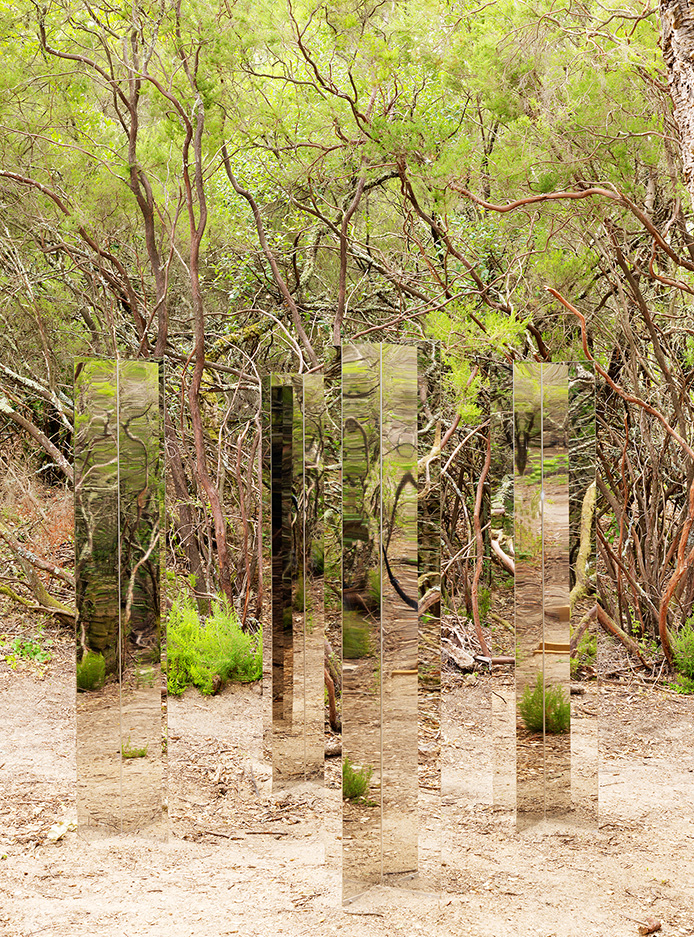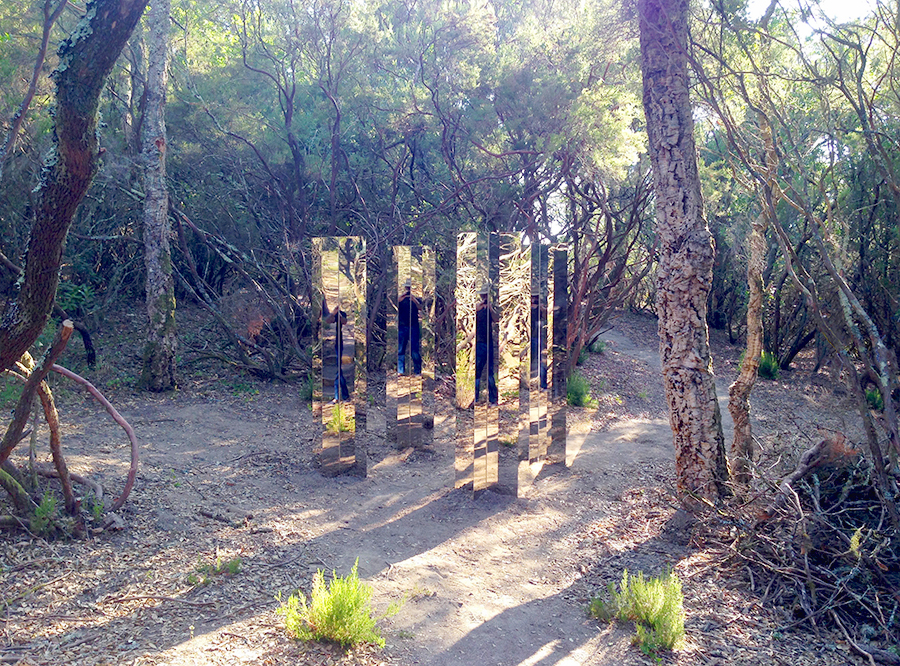4 centres délimitant un carré
4 centres délimitant un carré
2015/2020
exposition collective, domaine du muy
inox poli miroir
163x163cm ht.183cm

.
commissariat / simon lamunière
avec // john armleder / atelier van lieshout / monica bonvicini / claudia comte / carlos cruz-diez / mounir fatmi / sylvie fleury / claire fontaine / jean-françois fourtou / michel françois / vidya gastaldon / antony gormley / subodh gupta / mark handforth / keith haring / carsten höller / sui jianguo / peter kogler / yayoi kusama / claude lalane / françois-xavier lalane / arik levy / sol lewitt / isa melsheimer / sarah morris / gianni motti / niki de saint phalle / tomás saraceno / katja schenker / roman signer / takis / xavier veilhan / not vital / rob wynne / andrea zittel
© photo geoffroy mathieu pour le monde 2
A propos de 4 centres délimitant un carré exposé au domaine du Muy (été 2015)
C’est une sculpture à laquelle on peut difficilement échapper, comme on peut difficilement échapper à soi-même et au monde qui nous entoure, que ce monde soit ou non dépendant de la volonté humaine.
La sculpture est ces deux mondes à la fois : fruit d’une volonté, elle rompt le continuum naturel et crée un espace organisé par l’homme. Et pourtant, en se fondant par reflets à ce qui l’entoure, elle devient la nature (la nature, ce qui justement est indépendant de toutes volontés humaines).
Mais, en réfléchissant sa propre image, elle semble se reconstituer, par effet de transparence, comme si elle s’échappait à elle-même. Dans le même mouvement, elle nous renvoie à nous-mêmes, nous démultipliant et nous éparpillant en fragments.
Sa perception renvoie à la perception du monde, monde dont nous faisons partie : qu’en voit-on, qu’en distingue-t-on au juste, peut-on s’en extraire autrement qu’en le contemplant ?
About 4 centers delimiting a square, exhibited at the domaine du Muy (summer 2015)
One can hardly escape this sculpture, just as we can hardly escape ourselves and the world that surrounds us, whether or not this world depends on human will.
The sculpture is those two worlds at the same time : the fruit of a will, it breaks the natural continuum and creates a space organized by man. And yet, by reflecting on what surrounds it, it becomes nature (nature, which is precisely what is independent of all human wills).
But, by reflecting its own image, the sculpture seems to reconstruct itself, through transparency, as if it had escaped from itself. In the same movement, it sends us back to ourselves, multiplying us and scattering us into fragments.
To perceive it is to perceive the world, a world we belong to : what can we see of it ? What parts of it can we really distinguish from it ? Can we extract ourselves from the world in any other way than by contemplating it ?
